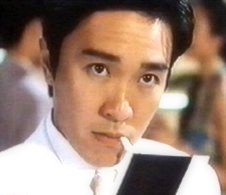Government replies to allegations raised by Dr M

Dr Mahathir has raised several allegations on the Government’s decision to abort building a bridge to replace the Johor Causeway.
Below, the Government sets out facts and sketches the historical backdrop in which this decision was reached:
1. Allegation: That the Singapore Government accepted Malaysia’s proposal to build a crooked bridge to replace the Malaysian side of the Johor Causeway.
Facts: On March 4, 2002, Dr Mahathir wrote a letter to Senior Minister Lee Kuan Yew regarding Malaysia’s proposal on the package of outstanding bilateral issues. Among other things, he proposed building a new bridge on the Malaysian side at Kuala Lumpur's cost while Singapore would build the bridge on the Singapore side at its own cost.
Once the bridge was completed, the Johor Causeway would be demolished. Dr Mahathir further proposed that if Singapore did not build a bridge on its side, Malaysia intended to build a bridge on its side. Once this bridge was completed, the Johor Causeway on the Malaysian side would be demolished.
On April 11, 2002, Singapore Prime Minister Goh Chok Tong replied and agreed, although his preference was for a full bridge. However, that proposal was made in the context of the package approach for the outstanding bilateral issues which would be further discussed at ministerial and senior officials’ level.
On Oct 7, 2002, Dr Mahathir informed Goh that Malaysia had decided to discontinue discussions on the outstanding bilateral issues as a package and to give the highest priority to resolving the long delayed water issue, particularly the price review of raw water supplied to Singapore. This move came because there appeared to be no agreement in resolving the issues as a package.
On Oct 14, 2002, Goh agreed to discontinue discussions on the outstanding bilateral issues as a package. Singapore withdrew its agreement on the crooked-bridge in the context of the package and stated that its earlier agreement to the bridge project was no longer valid.

Goh wrote: “? I had been prepared to make concessions in varying the Points of Agreement (POA) with extra pieces of land, allowing early withdrawal of Central Provident Fund (CPF) deposits and building our part of the bridge to replace the Causeway at our expense, as trade-offs, so that you give us airspace and future water at a fair price? Since you now want to deal with the water issue separately and discontinue the package approach, these trade-offs are no longer possible.”
In effect, this letter signalled a return to a status quo position. Goh’s statement was not challenged by Dr Mahathir.
In fact, there was no reply to Goh’s letter by Dr Mahathir.
Singapore reiterated its position in a diplomatic note on Nov 29, 2004 while the Customs, Immigration and Quarantine (CIQ) Complex in Bukit Chagar was being built.
It said: “ ? These negotiations on a package basis were unilaterally terminated by the then Prime Minister of Malaysia Tun Dr Mahathir Mohamad on Oct 7, 2002.” With the termination of the negotiations on the package of issues, Singapore’s agreement for the construction of the crooked bridge was no longer valid.
Conclusion: It is incorrect to say that Singapore accepted Malaysia's proposal to build a crooked bridge within its own territory. Singapore’s acceptance for Malaysia to build a crooked bridge was at most a reluctant acceptance based on the package approach.
2. Allegation: That the letter from Goh on April 11, 2002 was the final commitment by the republic on the bridge proposal by Malaysia.
Facts: During negotiations between the two countries, there was an understanding that any proposal would not become final unless it was concluded in an agreement signed by leaders of Malaysia and Singapore.
This was explained in a letter by Lee to the then Minister of Special Functions & Minister of Finance, Tun Daim Zainuddin on Aug 24, 2000.
The letter read: “To make it easier for us to write to each other, to test various options, all notes or letters I send to you or Dr Mahathir, or vice-versa, will be treated as Without Prejudice: that there is no agreement until all points are agreed and signed by the two PMs.”
Conclusion: It is incorrect to say that Goh had given a commitment on the bridge in his letter on April 11, 2002. There was no signed agreement between the PMs of Malaysia and Singapore towards building the bridge.
3. Allegation: That the bridge was not part of the package of bilateral issues.
Facts: At first, the outstanding package of issues only covered four areas – water, Central Provident Fund, airspace and the relocation of KTM’s CIQ complex in Singapore.
This was agreed to by both countries in Hanoi on Dec 27, 1998.
But later, the bridge project was inserted into the package of issues. Dr Mahathir did so in a letter to Lee on March 4, 2002 and the bridge issue became one of five issues in the package titled “MALAYSIA-SINGAPORE PACKAGE OF FIVE ISSUES – MALAYSIA’S PROPOSALS”
Conclusion:The bridge became part of the package of unresolved bilateral issues as a result of Dr Mahathir’s letter.
4. Allegation:That the Government’s decision to abort the bridge project would cause billions of ringgit in losses.
Facts: The total cost of building the CIQ, the crooked bridge and the new KTM line across the Johor Straits was RM2.379bil.
At this moment, the Government is still working out compensation payment to Gerbang Perdana Sdn Bhd. But the fact is that the decision to abort the bridge was not an economic decision. Once it became clear that Malaysia could not build the bridge unilaterally or accede to Singapore’s requests, calling off the plan to build the bridge was the most financially responsible decision to make.
Conclusion:: It would not have been advisable to spend RM1.13bil on a structure and be stuck in limbo over its use.
5. Allegation:That Malaysia is a “half-past six country with no guts” for calling off the bridge project.
Facts: Simply put, the Government had to make the right decision, taking into account the interest of Malaysians. It revisited the unilateral proposal by Dr Mahathir to build the crooked bridge but came to a finding that this was not an ideal solution.
A crooked bridge is not a legacy to leave for future Malaysians.
In coming to its decision to abort the bridge project, the Government studied not only the Wayleave Agreements but also the Johor-Singapore Water Agreements 1961 and 1962, the Separation Agreement 1965 and took into consideration advice from the Attorney-General’s Chambers.
This is what the Attorney-General’s Chambers said: “ ? the construction of the scenic half bridge to replace the Malaysian side of the Johor Causeway must be studied in a holistic manner in view of the fact that the scenic half bridge would have international legal implications in particular environmental impact to Singapore in and around the Straits of Johor.
“Apart from the above, the construction of the scenic half bridge will involve the demolition of the Malaysian side of the Johor Causeway. The said demolition would directly affect the water pipeline located inside the Johor Causeway and water pipelines straddling the Johor Causeway. In this regard, legal implications thereof would have to be studied based on the 1961 and 1962, Johor-Singapore Water Agreements, Wayleave Agreements and Separation Agreement 1965.
“Malaysia as a sovereign and independent state has complete power and authority over its territory and in exercising the said power and authority, no other state may interfere with its affairs. Nevertheless, Malaysia cannot take unilateral action without taking into consideration international law principles and requirements, amongst others, taking into account the rights and interests of its neighbouring states.”
Conclusion: With so much uncertainly, it made sense for the Government to take a step back and do the right thing. Running the government is not about scoring points or engaging in brinkmanship. It is about weighing the pros and cons and reaching a decision that is good for Malaysia.
6. Allegation:That Malaysia offered its airspace and sand to Singapore.
Facts: The issue of allowing use of Malaysian airspace had been on the negotiating table between 1998 and 2002. Dr Mahathir himself inserted this issue in a letter to Lee on March 4, 2002.
He offered it as a trade-off during negotiations on the package of unresolved issues. With the de-packaging of the bilateral issues, the proposal made by Dr Mahathir was no longer relevant.
Singapore used to enjoy five flight privileges until 1998.
It sought all those rights to be re-inserted but the Government of the day was only prepared to offer Search and Rescue and the Northern Transit Corridor rights on terms and conditions to be mutually agreed upon.
The rights of Search and Rescue was offered on the basis of reciprocity and is consistent with international practice.
As for Northern Transit Corridor, it only allows RSAF jets to transit over the South China Sea.
The jets will not be allowed to roam in Malaysian airspace.
Conclusion: The use of Malaysian airspace was raised by Goh during a meeting with Prime Minister Datuk Seri Abdullah Ahmad Badawi on March 1, last year in Putrajaya. Singapore said that this issue was of importance to them and said that it would make selling the bridge idea to Singapore more palatable.
As far as the Republic was concerned, it did not see the need for a bridge to replace the Causeway.
It wanted something in return for agreeing to the bridge deal and requested for sand and the use of airspace.
But once it became clear that the Malaysian public was strongly opposed to selling any sand or allowing RSAF jets to use its airspace, the Government moved firmly and made the only acceptable decision – it aborted the plan to build the bridge.
Going ahead to satisfy the two conditions the city-state had put forward would have meant going against the wishes of many Malaysians.
The Government has always stated that its decision was a political decision, based on the sentiments, sovereignty and integrity of the people of Malaysia.
Related Stories:
Setting the record straight
Government will not declassify all papers
At a glance








0 Comments:
Post a Comment
<< Home